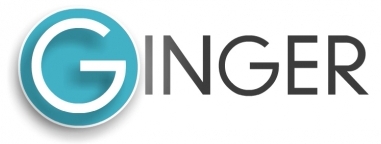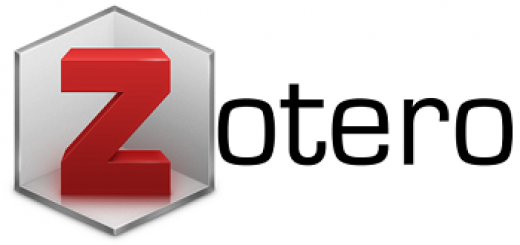PENYIMPANGAN MAKNA DENGAN HOMONIMI DALAM WACANA MEME (KAJIAN SEMANTIK)
Abstract
The objectives of this study are: (1) to describe how the use of homonyms creates semantic deviation as a strategy to build humor in memes, and (2) to describe the patterns of semantic deviation that utilize homonyms. This research is a descriptive qualitative study. Data were collected using the observation method with advanced note-taking techniques. Data analysis employed the referential equivalent method with comparative techniques to support coding, reduction, presentation, and interpretation in line with the qualitative research framework. The findings of this study indicate that the use of homonymic meaning relations includes basic words, derivations, foreign terms, and slang. Semantic deviations utilizing homonyms were found to occur due to euphemisms, naming, and pauses. In addition to homonyms, the use of homophones and homographs through word abbreviations was also observed. Three patterns were identified in creating semantic deviations using homonyms: (1) the deviated word is accompanied by explanatory text, (2) the deviated word is paired with an image as an explanation, and (3) the deviated word does not appear as a linguistic symbol but is implied through an image with text as clarification. The key elements driving semantic deviation in memes are images and the use of collocations. Proper collocations effectively mislead the reader before surprising them with the secondary meaning. This research provides a valuable framework for analyzing humor in digital media and broadens the scope of linguistic studies by emphasizing the relationship between meaning, creativity, and audience interpretation.
Keywords
References
Archakis, A. (2017). ‘‘I’m not racist but I expect linguistic assimilation”: The concealing power of humor in an anti-racist campaign. Discourse, Context & Media. www.elsevier.com/locate/dcm.
Aminuddin. (1990). Pengembangan Penelitian Kualitatif dalam Bidang Bahasa dan Sastra. Malang: Yayasan Asih Asah Asuh Malang.
Aminudin. (2003). Semantik Pengantar Studi Tentang Makna. Bandung: Sinar Baru Algensindo. Arikunto, S. (1993). Prosedur Penelitian Suatu Pendekatan Praktek. Jakarta: Rineka Cipta.
Ariyanto, J. (2013). “Analisis Wacana Humor Rons Imawan”. Tesis. Yogyakarta: Fakultas Ilmu Budaya UGM.
Attardo, S. (1994). Linguistic Theories of Humor. Mounte de Gruyter: New York.
Béal, C. (2016). The pragmatics of conversational humour in social visits: French and Australian English. Language & Communication. www.elsevier.com/locate/dcm.
Buchel, B. (2012). Internet Memes as Means of Communication. Masaryk University.
Chaer, A. (2009). Pengantar Semantik Bahasa Indonesia. Jakarta: Rineka Cipta.
Diaz, C. M. C. (2013). Defining & Characterizing the Concept of Internet Meme. Copenhagen: University of Copenhagen.
Edi Subroto, D. (2007). Pengantar Metode Penelitian Linguistik Struktural. Surakarta: UPT Penerbitan dan Pencetakan UNS.
Edi Subroto, D. (2011). Pengantar Studi Semantik dan Pragmatik. Surakarta: Cakrawala Media.
Husen, I. S. (2001). “Yang Lucu Dalam Lelucon Perancis” Meretas ranah bahasa, semiotika, dan budaya. Jogjakarta: Yayasan Bentang Budaya.
Kirk, J. & Miller, M. L. (1991). Reliability and Validity in Qualitative Research. Beverly Hills: Sage Publications.
Kridalaksana, H. (2001). Kamus Linguistik. Jakarta: Gramedia Pustaka Utama.
Leech, G. (2003). Semantik (Transl. Paina Partana). Yogyakarta: Pustaka Pelajar.
Mahsun. (2014). Metode Penelitian Bahasa Tahapan Strategi Metode, dan Tekniknya. Jakarta: Rajagrafindo Persada.
Marwan, I. (2013). Wujud Kebahasaan dalam Wacana Humor Kajian Semiotika. Jurnal Al-Tsaqafa. volume 10, No.1.
Miles, M. B. dan Huberman, A. (2007). Analisis Data Kualitatif Buku Sumber tentang Metode- Metode Baru. Transl. Tjetjep Rohendi Rohisi. Jakarta: Universitas Indonesia.
Moleong, L. (2013). Metodologi Penelitian Kualitatif. Bandung: Remaja Rosdakarya.
Pateda, M. (2010). Semantik Leksikal. Jakarta: Rineka Cipta. Parera, J. D. (2004). Teori Semantik Ed. 2. Jakarta: Erlangga.
Poerdawarminta, W. J. S. (2002). Kamus Besar Bahasa Indonesia. Jakarta : Balai Pustaka.
Pradopo, S. W. dkk. (1987). Humor dalam Sastra Jawa Modern. Jakarta: Pusat Pembinaan dan Pengembangan Bahasa.
Purwanti, E. (2006). Wacana Humor Dalam Komedi Ekstravaganza: Kajian Sosiopragmatik. Tesis. Yogyakarta: Fakultas Ilmu Budaya.
Romadloni, A. (2016). “Analisis Humor dalam Siaran Curanmor Radio Yes Cilacap”. Tesis. Yogyakarta: Universitas Negeri Yogyakarta.
Rustono. (1998). “Implikatur Percakapan sebagai Penunjang Pengungkapan Humor di dalam Wacana Humor Verbal Lisan Berbahasa Indonesia”. Disertasi. Yogyakarta: Universitas Negeri Yogyakarta.
Santosa, R. (2014). Metode Penelitian Kualitatif Kebahasaan. Surakarta: Fakultas Sastra dan Seni Rupa UNS.
Soedjatmiko, W. (1992). Pellba 5. Yogyakarta: Kanisius.
Sudaryanto. (2012). Wacana Humor Verbal Tulis Gus Dur: Kajian Sosiopragmatik. Tesis. Yogyakarta: Universitas Negeri Yogyakarta.
Sugiyono. (2014). Metode Penelitian Kuantitatif, Kualitatif dan R &D. Bandung: Alfabeta.
Suhadi, M. A. (1989). Humor itu Serius: Pengantar “Ilmu Humor”. Jakarta: Pustakakarya grafikatama.
Suwanto, A. A. S. (2012). “Analisis Wacana Humor Verbal Bahasa Inggris (Studi Kasus pada Serial Komedi Situasi How I Met Your Mother)”. Tesis. Yogyakarta: UGM.
Tarigan, H.G. (2009). Pengajaran Semantik. Bandung: Angkasa.
Ullmann, S. (2012). Pengantar Semantik (Adaptasi Sumarsono). Yogyakarta: Pustaka Pelajar.
Wijana, I. D. P. (1995). “Wacana Kartun dalam Bahasa Indonesia”. Disertasi. FIB UGM.
Wijana, I. D. P. (1994). Pemanfaatan Homonimi di dalam Humor. Humaniora I.
Wijana, I. D. P. (1985), “Bahasa Indonesia dalam Cerita Humor”. Linguistik Indonesia No.5, Th. III. Jakarta: Masyarakat Linguistik Indonesia
Wijana, I. D. P. (2003). Kartun: Studi Tentang Permainan Bahasa. Yogyakarta: Ombak.
Verhaar, J. W. M. (2012). Asas-Asas Linguistik Umum. Yogyakarta: Gajah Mada University Press.
DOI: https://doi.org/10.18860/ling.v13i1.4513
Copyright (c) 2018 LiNGUA: Jurnal Ilmu Bahasa dan Sastra

This work is licensed under a Creative Commons Attribution-ShareAlike 4.0 International License.
Member of:
Indexed by:
Editorial Office:
Laboratory of Information and Publication, Faculty of Humanities
Universitas Islam Negeri Maulana Malik Ibrahim Malang
Jalan Gajayana 50 Malang, Jawa Timur, Indonesia 65144
Email: jurnallingua@gmail.com
Phone: +62 (0)341 570872

LiNGUA by Laboratory of Information and Publication, Faculty of Humanities is licensed under a Creative Commons Attribution-ShareAlike 4.0 International License.
Based on a work at http://ejournal.uin-malang.ac.id/index.php/humbud/index.







